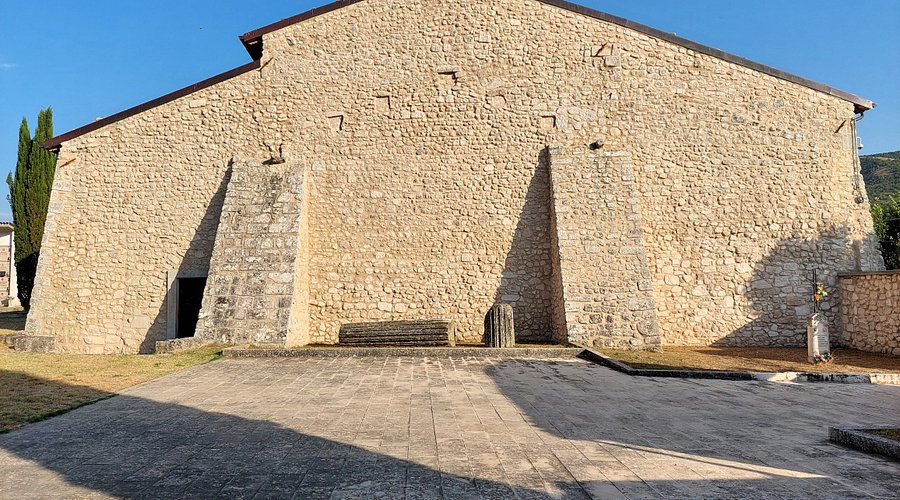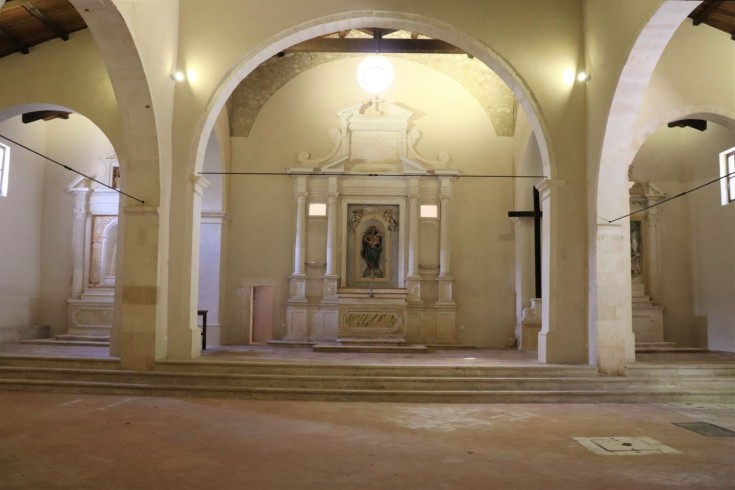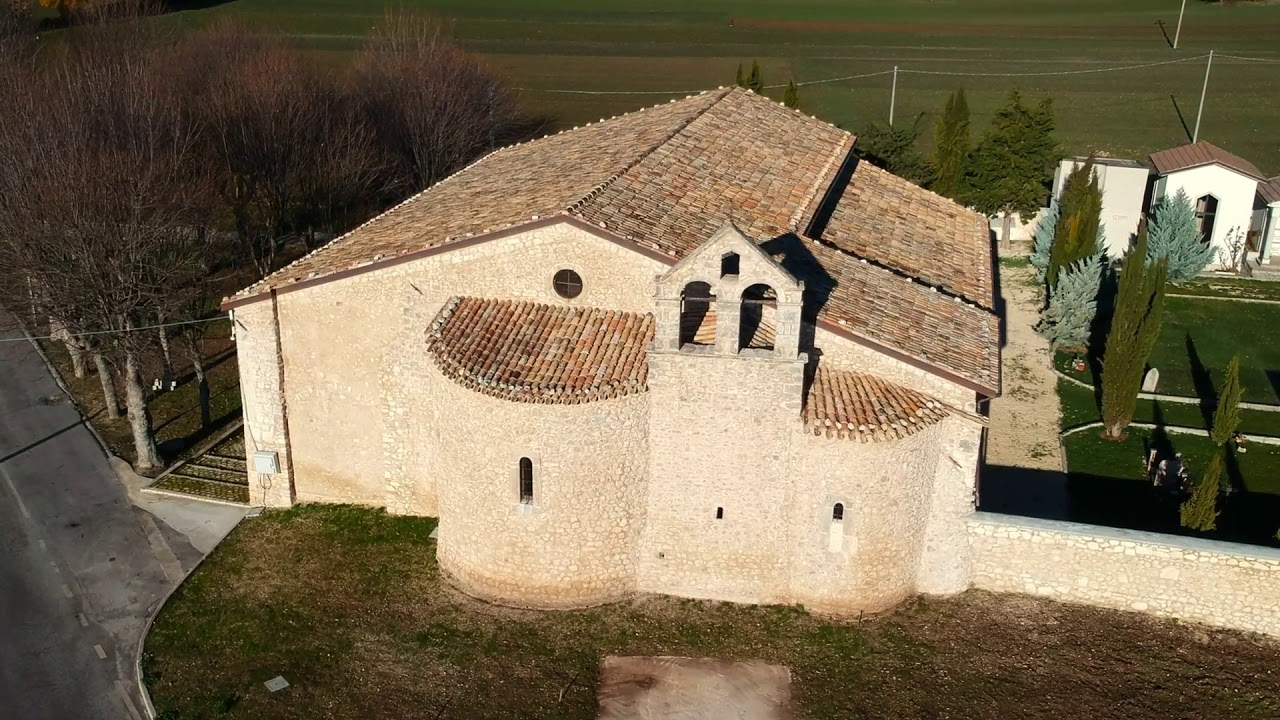The church retains the name of the Roman Italic vicus of *Incerulae and some material remains, in particular elements of at least two temple structures, from the Republican period. In addition, a fluted column and a larger column drum, hollowed out and possibly used as a baptismal font in the early Middle Ages, are at the entrance to the cemetery adjacent to the church: materials that testify to restorations of the two temples in the Imperial age.
Evolution
The settlement of *Incerulae did not die; on the contrary, it continued to live until the 14th century under the name of Cerulae, after which the inhabitants moved to the nascent villages of Navelli and Civitaretenga, protected by the walls. Cerulae must have been the most important centre in the area if the church based there, St. Mary's, held the title of archpriesthood, which it retained until the 19th century, when it was decided to transfer it to the church of St. Sebastian.
The church has undergone numerous interventions that have altered its structure several times. The layout is Romanesque, with three naves, all originally apsidal. One apse has collapsed, and the other two - which have beautiful 14th-century frescoes - were filled in in the 16th century to serve as a sacristy.
The entrance, on the side, is not original but belongs to the 1863 restoration, by which time the beautiful church had become a cemetery.



